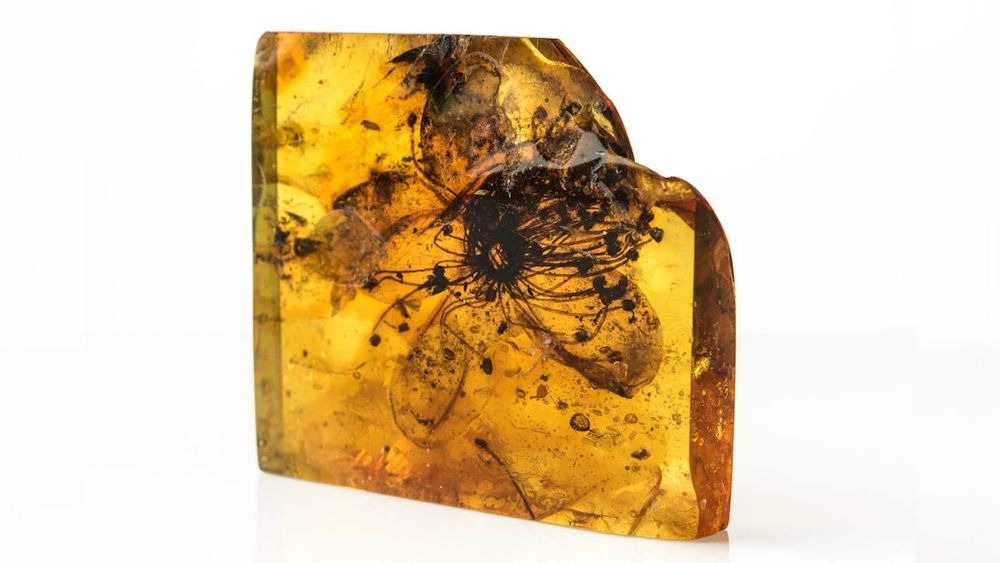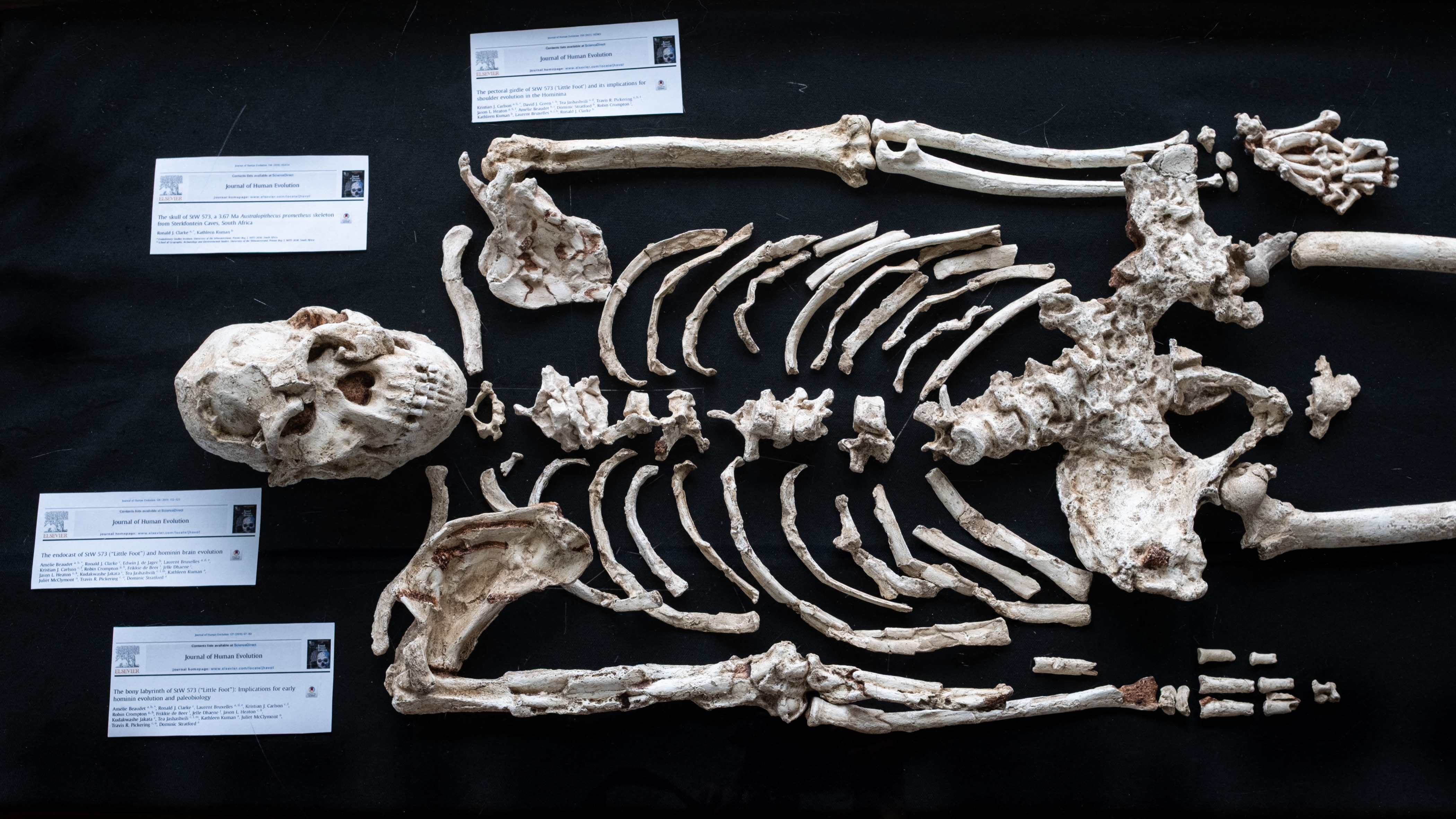Bloom entombed in amber is the largest fossilized flower ever found
The fossilized flower is the largest ever discovered.

Scientists have officially identified the largest fossilized flower ever recorded: a nearly 40 million-year-old flower entombed in a hunk of amber, according to a study published Jan. 12 in the journal Scientific Reports. The flower had been known for 150 years but has only now been definitively identified as a new species and is offering new clues to climates and ecosystems of the past.
Measuring about 1 inch (28 millimeters) wide, the strikingly well-preserved flower is three times larger than the next-biggest amber-embedded bloom ever found and was unearthed in 1872 in the Baltic forests of northern Europe. It dates to the late Eocene epoch (roughly 38 million to 33.9 million years ago). When the specimen was first discovered, naturalists classified it as the now extinct Stewartia kowalewskii, an ancient flowering evergreen plant, according to a statement.
The flower was then housed in the Natural History Museum in Berlin for the next century and a half. However, for years, researchers questioned the blossom's true identity.
Related: Amber tomb of 'dancing' wasp and delicate flower also hides a gruesome secret
To lay to rest the uncertainty surrounding the blossom's genus and species, researchers extracted specks of pollen and examined them, along with the bloom's anatomy, under a microscope. They determined that the flower wasn't S. kowalewskii — or even from the genus Stewartia. Rather, it was part of Symplocos, "a genus of flowering shrubs and small trees not found in Europe today but widespread in modern East Asia," according to The New York Times.
Therefore, the study authors proposed a new name for the flower: Symplocos kowalewskii.
While they're harder to come by, plants in amber provide paleobotanists with a wealth of information, Eva-Maria Sadowski, a postdoctoral researcher at the Natural History Museum in Berlin, told The New York Times. The reclassification of this flower is important because it provides scientists with a better understanding of the ecological diversity of the Baltic amber forest and how the planet's climate has changed over time.
Get the world’s most fascinating discoveries delivered straight to your inbox.
"These tiny grains are natural recorders of past climates and ecosystems that can help us measure how much our planet has changed in the past due to natural (nonhuman) causes," Regan Dunn, a paleobotanist and assistant curator at La Brea Tar Pits and Museum in California who was not involved with the research, told The New York Times. "This allows us to better understand just how much our species is impacting the planet."
Jennifer Nalewicki is former Live Science staff writer and Salt Lake City-based journalist whose work has been featured in The New York Times, Smithsonian Magazine, Scientific American, Popular Mechanics and more. She covers several science topics from planet Earth to paleontology and archaeology to health and culture. Prior to freelancing, Jennifer held an Editor role at Time Inc. Jennifer has a bachelor's degree in Journalism from The University of Texas at Austin.


